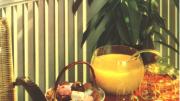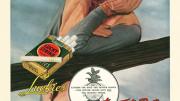The 1934 Rockefeller Plaza exhibition of advertising and industrial photography consisted mostly of black-and-white images, but did include some color prints, four of them shown here (see “Click and Ka-ching,” July-August, page 84). The High Art of Photographic Advertising, a reprise of the 1934 exhibition, is on view at Baker Library, Harvard Business School, through October 9. In the accompanying catalog, guest curator Melissa Banta explains the challenge of color.
“Color photography made its appearance in magazine advertising in the 1890s through the process of chromolithography,” Banta writes. “Advances in the technology came in 1910, with the development of two- and three-color printing processes. In general, color printing was more complicated and expensive than black and white, and its results less reliable and ‘realistic.’ Trade journals essentially considered black and white ‘preferable to lurid or unnatural color reproductions.’”
In any case, most products being advertised were not colorful. “When color began to be added to the products themselves,” Banta writes, “advances in color printing and reproduction followed. Starting in the 1920s, American consumers went from a commercial world of white towels and black Model Ts to a range of products with a fantastic palette of hues from which to choose.”












